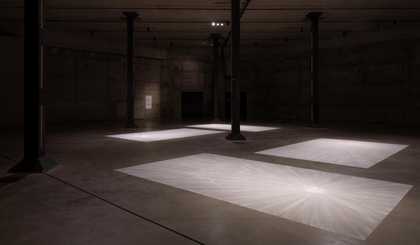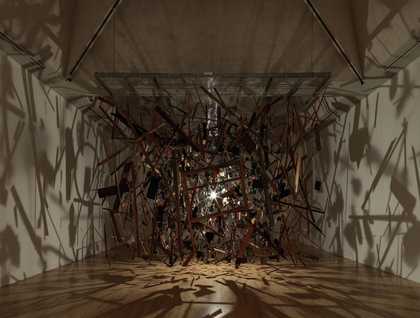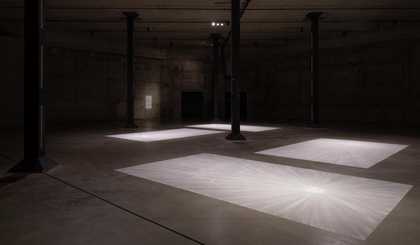In Commonplace 1999, talcum powder is brushed into rectangular shapes on the floor, resembling delicate white paintings
Commonplace is remade according to Neuenschwanderãs instructions every time it is exhibited. Composed entirely of talcum powder, it is extremely fragile and will be destroyed at the end of this display. A broom was used to gather the talcum into circular shapes within the rectangles. This has left streaks in the powder. These traces suggest the artist is treating the powder like a kind of paint and the broom as a brush.
Most of Neuenschwanderãs installations and videos use ordinary and perishable materials. This includes dust, fruits, spices, water and soap bubbles. In her works, simple gestures turn the stuff of everyday life into something unfamiliar and poetic. Sometimes her artworks move and change over time, or include elements that the public can take away or modify. They are often impermanent and have a life of their own that the artist cannot fully control or predict.
The use of a simple broom and a familiar toiletry product also brings to mind images of domestic life. The faint smell of talc might bring back memories of its use for personal care. This is a ãcommonplaceã, intimate and homely experience many people share.
Each rectangle can be seen as a floor-based ãwhite monochromeã painting. Many artists experimented with the colour white between the 1950s and the 1970s. They were, in a sense, also trying to make the familiar medium of painting into something unfamiliar. This act reduced their artistic labour into minimal gestures.
You can see other examples of this approach in the Painting with White display in In the Studio on level 2 of the Natalie Bell building. You can also find more work by Neuenschwander in the Start Display on the same floor.



